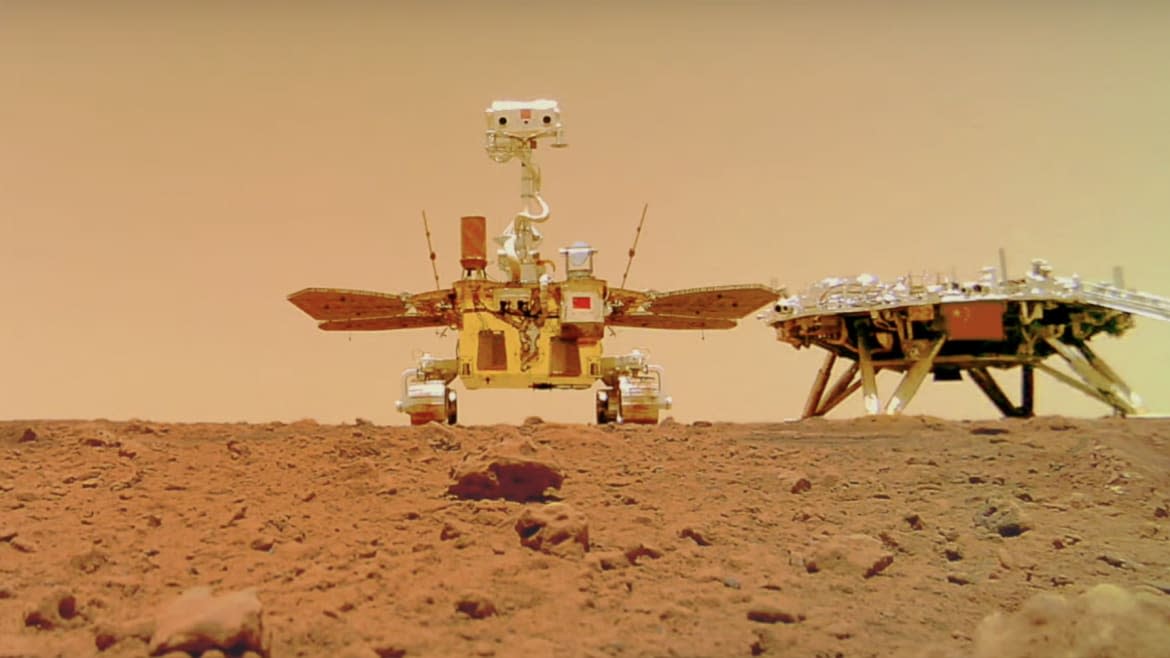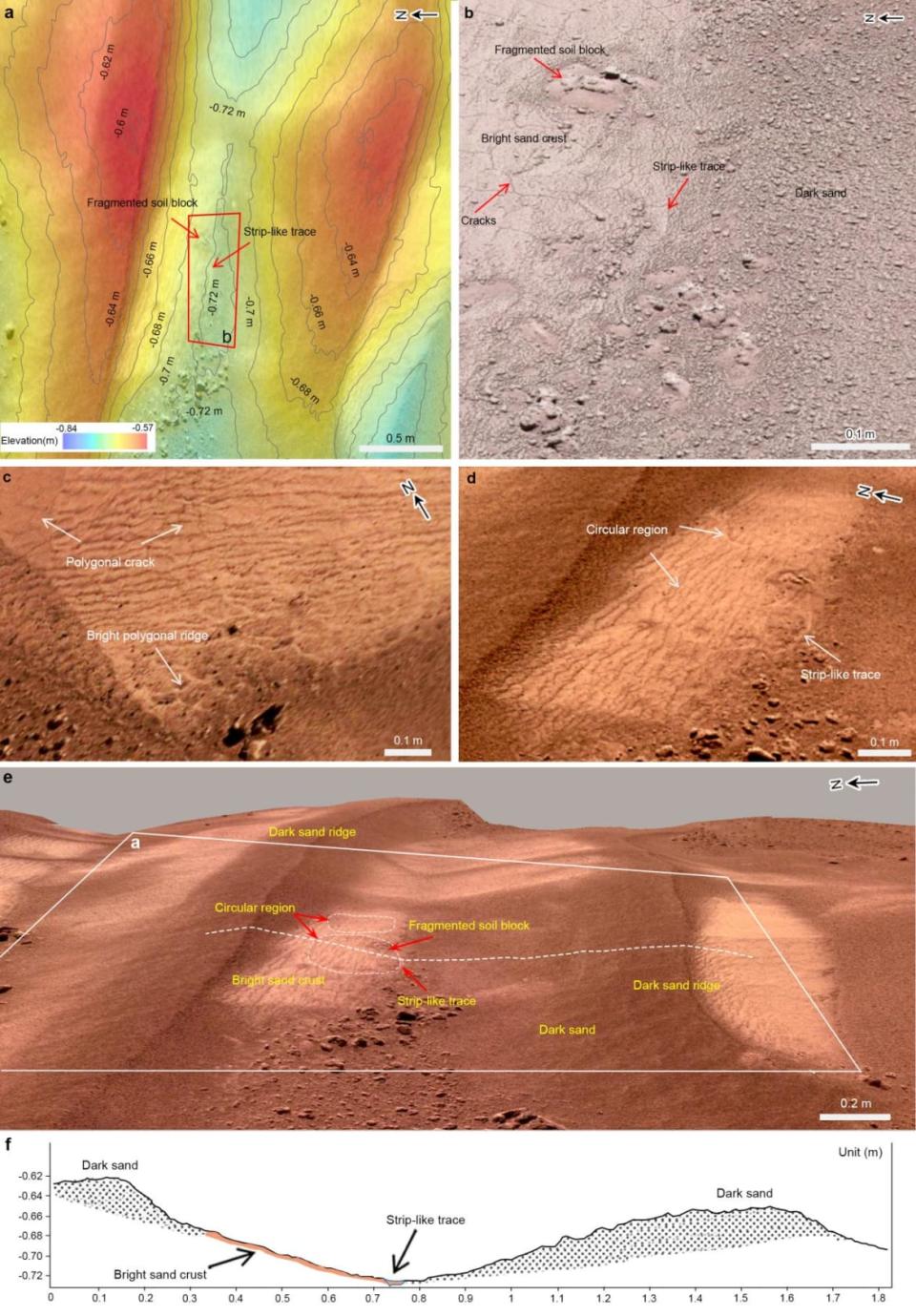China’s Rover May Have Found Hints of Water on Mars Dunes

China’s Zhurong Mars rover has seen better days.
The craft hasn’t moved for months, spurring speculation that something might have gone wrong with it. On Tuesday, a designer for the Chinese Mars mission confirmed to state TV that the rover likely accumulated so much dust on its solar panels that it has been unable to power back up.
Just because the rover is likely down for the count, though, doesn’t mean that it can’t still deliver groundbreaking discoveries. Case in point: researchers from the Chinese Academy of Sciences have discovered evidence of saltwater through analysis of Martian sand dunes by Zhurong.
In a study published on Friday in Science Advances, images and chemical data gathered by the rover show hints that melting pockets of frozen water might have formed cracks and erosion on the sand dunes. Of course, where there’s water, there’s also the potential for life, so the discovery could point the way for future research into signs of life on the Red Planet.
“Our findings provide useful clues for designing future exploration strategies for Mars rovers,” the study’s authors wrote. Specifically, future researchers should pay closer attention to “small depressions and encrusted soil surfaces” for evidence of saltwater on the Martian landscape.
Water Found on Mars Could Be First Signs of Martian Life
The authors added, “As saline water once existed at various latitudes on the surface of Mars, priority should be given to salt-tolerant microbes in future missions searching for extant life on Mars.”
The findings add credence to the idea that Mars had water on it relatively recently. While most scientists agree that the Red Planet used to actually be fairly wet and covered with oceans that likely teemed with life, that all occurred billions of years ago. It’s since dried up, giving way to the rocky and sandy planet Mars is today.
However, the measurements taken by Zhurong indicate that there might have been some water on Mars as recently as 400,000 years ago. In the span of planetary history, that’s the blink of an eye. For some perspective, early humans were hunting grazing animals in Africa at this time.

(a) Topographic contour map of the environs where the trace is located. The coordinate system is east-north-up (ENU) local Cartesian coordinate and the origin is that of the rover coordinate system. The background Digital Orthophoto Map (DOM) photo was taken by NaTeCam. (b) MSCam bird’s-eye-view photo showing a strip-like trace and a likely water-soaked fragmented soil block. (c) Enlarged photo showing polygonal cracks and bright polygonal ridges. (d) Enlarged photo showing circular region with the strip-like trace as a part. (e) NaTeCam 3D image of an interdune depression between two dark longitudinal dunes. (f) A cross-section of the dune along the profile of the white dash line in (e).
Experiments run by the Chinese team also revealed that the crust and ridges of the sand dunes probably were the result of saltwater thawing from snow or frost. That reveals a potential water process system that could still be occurring on Mars—though much more research is needed to bear out anything conclusive.
If there is any life on the Red Planet, the study’s authors say it’s likely a very hardy form of life capable of living in a salt-rich environment. Any water that might be present on the planet will likely contain a lot of saline, so organisms would have to be able to survive it.
While we’ve likely heard the last of Zhurong, the data the rover has gathered during its time on the Red Planet will continue to provide insights into future Martian explorations. Of course, that means that we have to find a way to get there—so let’s hope SpaceX can figure out its Starship headaches sooner rather than later.
Get the Daily Beast's biggest scoops and scandals delivered right to your inbox. Sign up now.
Stay informed and gain unlimited access to the Daily Beast's unmatched reporting. Subscribe now.

